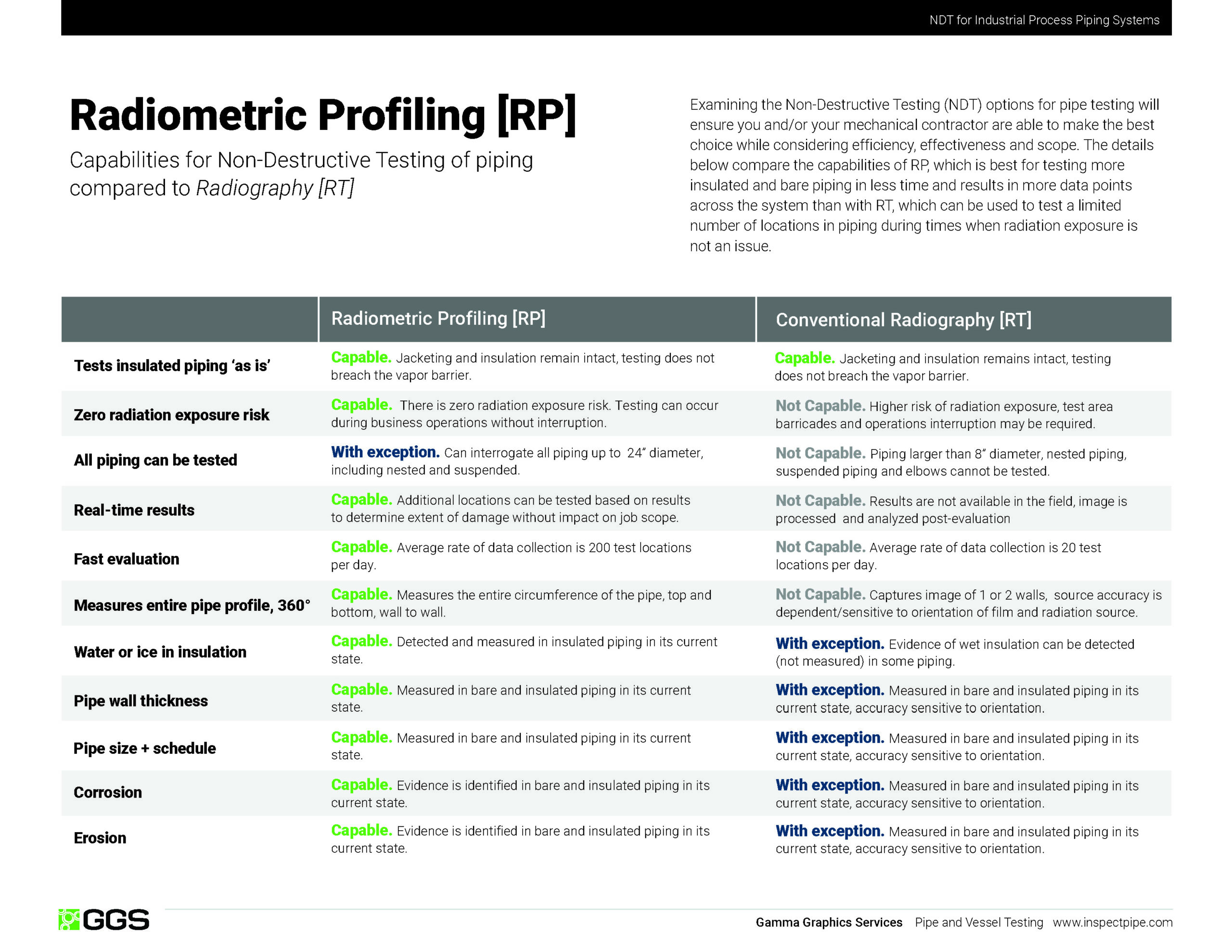Industrial Radiography Testing

Much like a familiar medical x-ray, conventional Industrial Radiography testing uses radiation to capture an image, or an x-ray, of the pipe. An x-ray film or a digital plate is located near the pipe to be inspected and an x-ray or gamma ray energy source is located some meters away. The film or digital plate is then exposed to the radiation, resulting in an x-ray image of a portion of the pipe.
For radiography testing, safety regulations require that a safe working area be established during the creation of the images. This often means that a barrier will be identified. All personnel inside of the boundaries of the barrier will need to be evacuated during the exposure, including those on floors above and below.
Radiography is often followed by a second NDE/NDT method to further investigate areas of vulnerability identified by the evaluation.
When determining the best method for your industry and company requirements, there are many factors that should be evaluated. Examine the following characteristics of industrial radiography testing on piping.
Characteristics of Industrial Radiography
- No insulation removal or surface prep is required.
- Can identify water or ice in insulation and measure pipe wall thickness and schedule.
- Can measure up to 6” diameter pipe (including insulation and jacketing).
- RT provides results post-evaluation for future further investigation where necessary.
- Technicians can inspect up to 20 locations per day.
Limitations
- High risk of radiation exposure, barriers and operations break may be required.
- Cannot measure piping greater than 6” diameter (including insulation and jacketing).
- Accuracy of indications and measurements are dependent/sensitive to orientation of film and radiation.
- All pipe cannot be interrogated with Industrial Radiography. Nested piping, suspended piping and elbows cannot be tested.
Industrial Radiography includes:
- Direct (DR)
- Computed Radiography (CR)
- Conventional Radiography (RT)
- Real-Time Radiography (RTR)
In an attempt to address some of the limitations of Conventional Radiography (RT), some NDT vendors have created a hybrid technique. Initial scanning is applied with Real-Time Radiography (RTR). Results from the RTR testing determine which locations will receive follow-up testing with RT.
Once RT locations are determined using RTR, the same benefits and limitations of RT techniques apply. This approach results in fewer locations receiving RT application.
RTR (Real-Time Radiography) can be an effective pre-screening tool for RT, as long as the equipment positioning difficulties and limited scanning area of RTR do not prevent comprehensive inspection. However, RTR cannot interrogate all piping, evaluates only the outside diameter (OD) of pipe and cannot measure pipe wall thickness.
Consider a better method for testing your piping.
Industrial Radiography testing can be used to test a limited number of locations in piping during times when radiation exposure is not an issue.
Compare an alternative that doesn’t require you to settle. Radiometric Profiling (RP) tests more insulated and bare piping in less time and is 100% safe.
